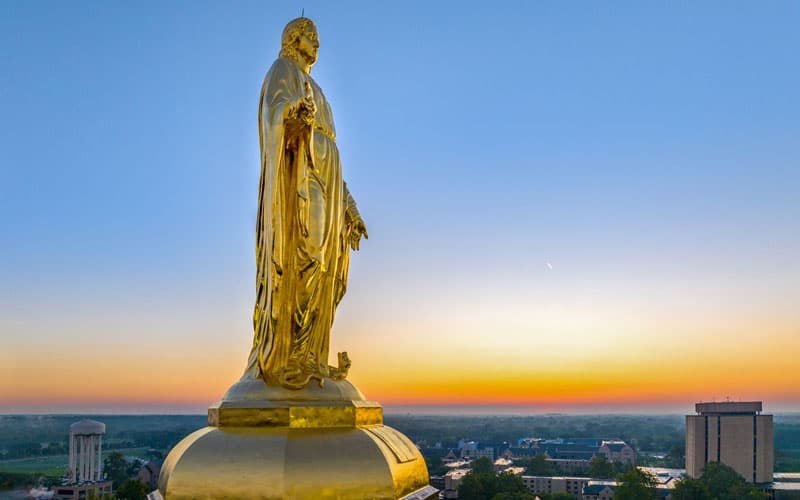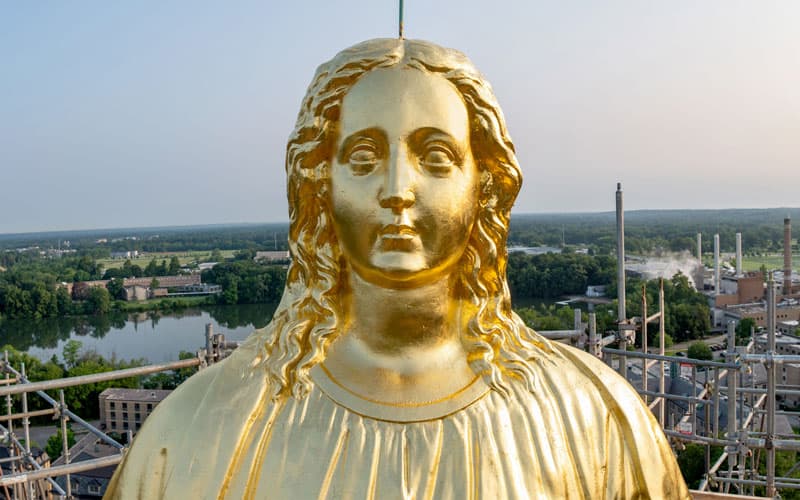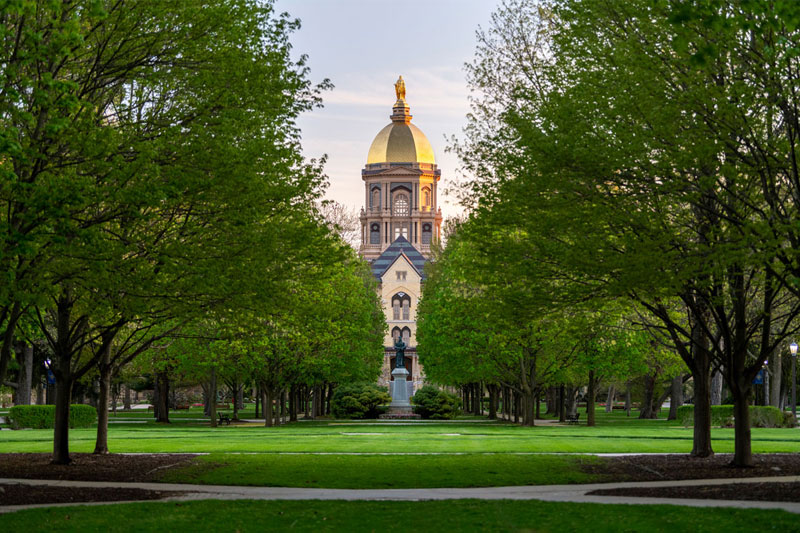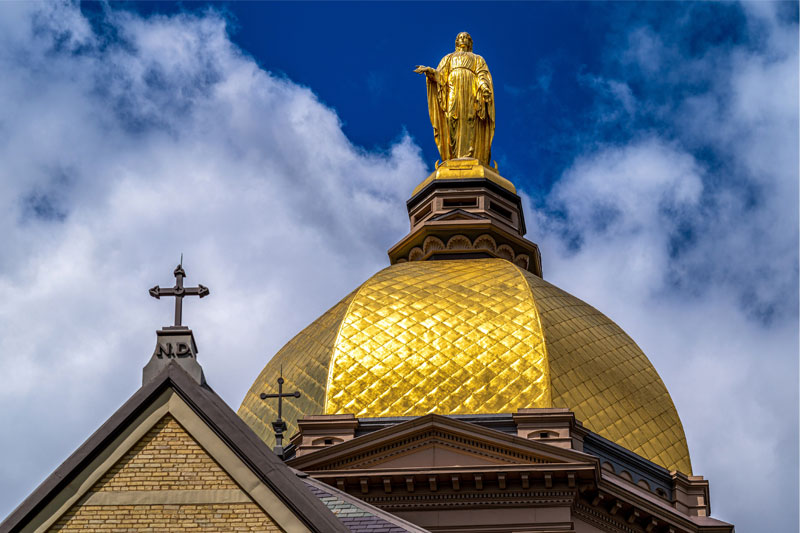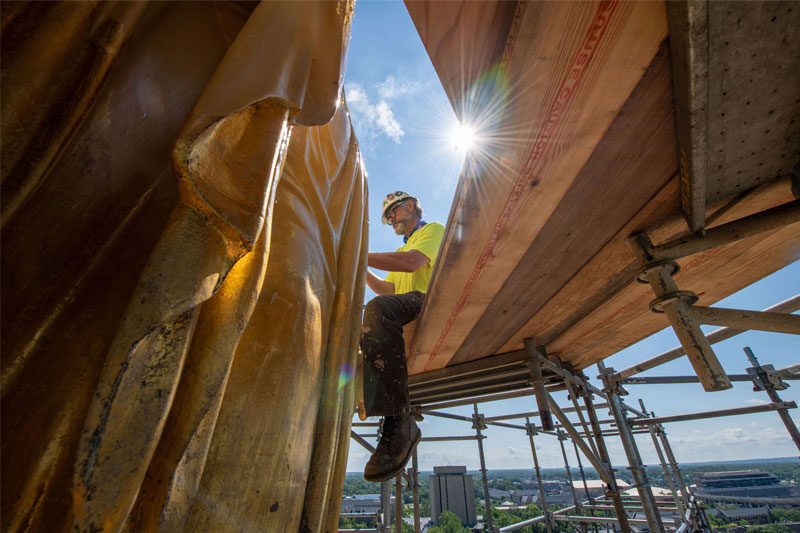A great sign appeared in the sky, a woman clothed with the sun, with the moon under her feet, and on her head a crown of twelve stars.
—Revelation 12:1
Looking up at the newly regilded statue of Mary atop the Main Building, gleaming gold in the afternoon light, it is not difficult to imagine her as the woman who appears in Revelation, “clothed with the sun” itself.
And that is as the sculptor Giovanni Meli intended, according to Robin Jensen, the Patrick O'Brien Professor of Theology and an expert in early Christian art and depictions of Mary.
In the Book of Revelation, chapter 12, the prophet John the Evangelist describes a vision of a woman clothed with the sun and adorned with stars—a woman soon to give birth to a son who is destined to rule all nations and who will be caught up to God and his throne.
In the Christian tradition, she is identified as Mary, the mother of Jesus.
John goes on in chapter 12 to describe how the woman encounters a great dragon—or an ancient serpent—representing Satan, who seeks to destroy her son and wage war against all who keep God's commands.
“You can see that our statue of Mary is standing on a half globe, with a crescent moon and a serpent under her feet,” Jensen said. “This is very traditional iconography of Mary as the woman in Revelation, where having the serpent under her feet symbolizes victory over evil.”
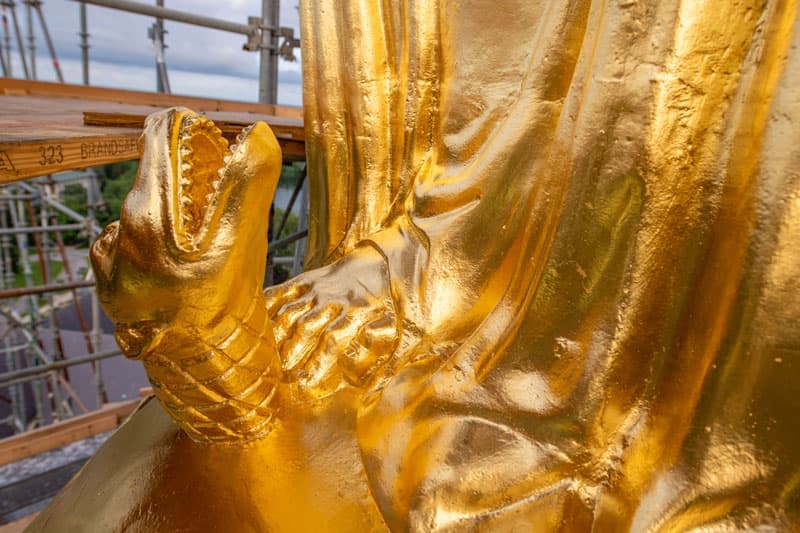
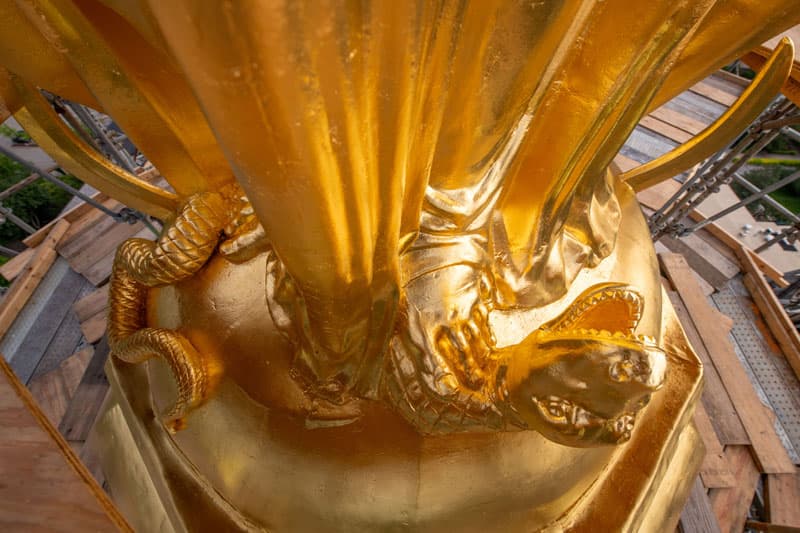
The chapter provides an interesting counterbalance to the story of Eve's fall in Genesis, Jensen said, and is the reason that Mary is sometimes referred to as the “new Eve”—a tradition that began in Christianity as early as the second century A.D.
“It's kind of wonderful because these two stories really bookend the Bible. It starts with Genesis, and then here we end with Revelation,” she said. “In the Genesis story, the serpent is the one who tempts Eve to eat the fruit. And in many images of the story, even from the Middle Ages, the serpent actually has feet and is standing upright like a dragon until God curses him to crawl on his belly for the rest of time. After the fall, Eve is also cursed to have pain in childbirth and Adam is cursed to work.
“And though it is not in the Bible, it is in the Catholic tradition that when Mary gives birth to Jesus, she has no pain. So, she becomes the reversal of the curse of Eve. Thus, she is the new Eve, and the son that she gives birth to is the one who will destroy the serpent that we first see in the book of Genesis. So, you can connect all these dots.”
While artists often depict Mary as a mother with the infant Jesus in her arms, Jensen noted that this iconic statue is similar to the statue of Mary in the Grotto, where she appears under her title, the Immaculate Conception.
For Jensen, who studies the importance of context in viewing sacred art, it is also fitting to see such a statue atop an administrative building rather than a church.
“I have a funny feeling that most people outside Notre Dame who see the statue of Mary on the Golden Dome—say, in a panorama shot on TV during a football game—think it must be atop a church,” she said.
“And I think the fact that it is not on the Basilica, but on the Main Building, is actually very important. It moves it away from just being a simple church statue into something that has become our emblem. In a way, she has become the guardian of our entire campus. She's the one we look up to. She's the one who looks over us and prays for us—and I love that feeling.”
